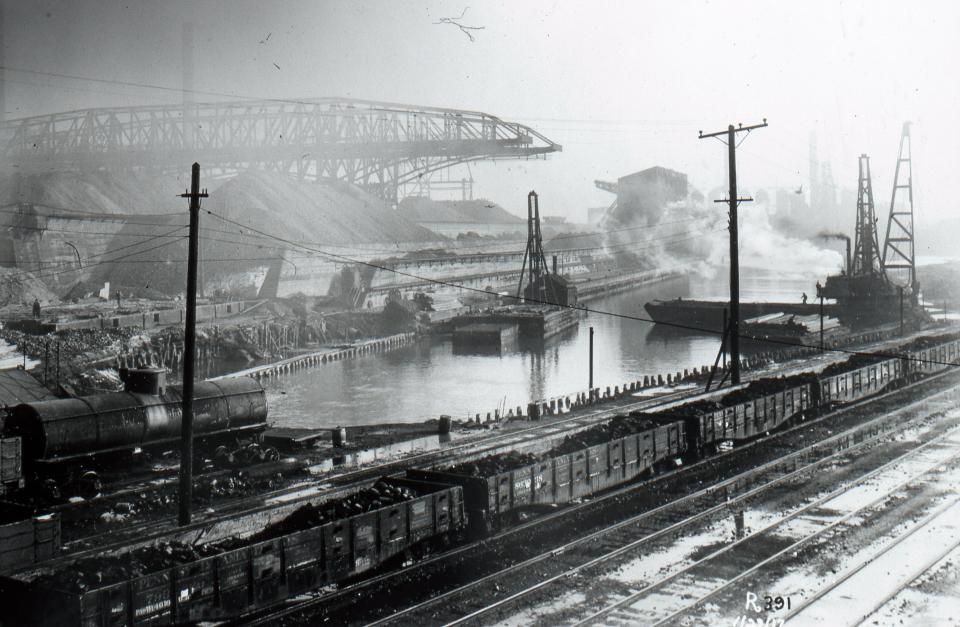
South Slip at South Works, 1917. This artificial inlet received ore and coal to be distributed by rail cars within the steel plants. Note the coal mountain within the ore walls just beneath the gantry cranes. Courtesy of the Southeast Chicago Historical Society [Archive ID: 1983-100-d22]. All rights reserved.
South Slip at South Works, 1917. This artificial inlet received ore and coal to be distributed by rail cars within the steel plants. Note the coal mountain within the ore walls just beneath the gantry cranes. Courtesy of the Southeast Chicago Historical Society [Archive ID: 1983-100-d22]. All rights reserved.
Courtesy of the Southeast Chicago Historical Society [Archive ID: 1983-100-d22]. Used by permission.
The copyright holder reserves, or holds for their own use, all the rights provided by copyright law, such as distribution, performance, and creation of derivative works.
McNeill, J. R. “Chicago’s Temple of Steel: South Works since 1882.” Springs: The Rachel Carson Center Review, no. 2 (December 2022).
The new steel mill at the north edge of the remodeled Calumet River’s mouth acquired the name of South Works. From 1889, Illinois Steel, briefly the world’s largest steelmaker, operated it. In 1901, through a series of mergers, it became part of US Steel, then the world’s largest company of any kind. In short order, South Works was one of three large, integrated steel works in Chicago, which together turned out about a million tons of steel each year. It came to specialize in “structural” steel: for rail cars made at the nearby Pullman factory; rails; bridge spans; and girders for the skyscrapers that were then beginning to create the jagged Chicago skyline. (From the article)
This article was originally published in Springs: The Rachel Carson Center Review. The journal is an online publication featuring peer-reviewed articles, creative nonfiction, and artistic contributions that showcase the work of the Rachel Carson Center and its community across the world.
2022 John R. McNeill

This work is licensed under a Creative Commons Attribution 4.0 International License.
This license refers only to the text and does not include any image rights.
Please see captions in the PDF for individual licenses.

